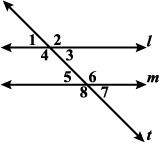Consider the following.
25, 5, 8, 14, 6
Compute the population standard deviation of the numb...

Mathematics, 01.12.2020 04:40 znation1324
Consider the following.
25, 5, 8, 14, 6
Compute the population standard deviation of the numbers. (Round your answer to one decimal place.)
(a) Add a nonzero constant c to each of your original numbers and compute the standard deviation of this new population. (Round your answer to one decimal place.)
(b) Use the results from part (a) and inductive reasoning to state what happens to the standard deviation of a population when a nonzero constant c is added to each data item.
The standard deviation becomes c. The standard deviation remains the same. The standard deviation becomes 0. The standard deviation increases by c. The standard deviation decreases by c.


Answers: 3
Another question on Mathematics

Mathematics, 21.06.2019 18:00
Jack has a piece of red ribbon that is two times as long as his piece of blue ribbon. he says that he can use two different equation to find out how long his piece of red ribbon is compared to his piece of blue ribbon is. is he correct? explain his reasoning
Answers: 1

Mathematics, 21.06.2019 19:00
Quadrilateral abcd in the figure below represents a scaled-down model of a walkway around a historic site. quadrilateral efgh represents the actual walkway. abcd is similar to efgh. what is the total length, in feet of the actual walkway?
Answers: 2


Mathematics, 21.06.2019 20:30
A. plot the data for the functions f(x) and g(x) on a grid and connect the points. x -2 -1 0 1 2 f(x) 1/9 1/3 1 3 9 x -2 -1 0 1 2 g(x) -4 -2 0 2 4 b. which function could be described as exponential and which as linear? explain. c. if the functions continue with the same pattern, will the function values ever be equal? if so, give estimates for the value of x that will make the function values equals. if not, explain why the function values will never be equal.
Answers: 3
You know the right answer?
Questions

Mathematics, 05.09.2020 01:01




Biology, 05.09.2020 01:01

Mathematics, 05.09.2020 01:01

Mathematics, 05.09.2020 01:01



Social Studies, 05.09.2020 01:01



Mathematics, 05.09.2020 01:01

Mathematics, 05.09.2020 01:01


Advanced Placement (AP), 05.09.2020 01:01

Mathematics, 05.09.2020 01:01







